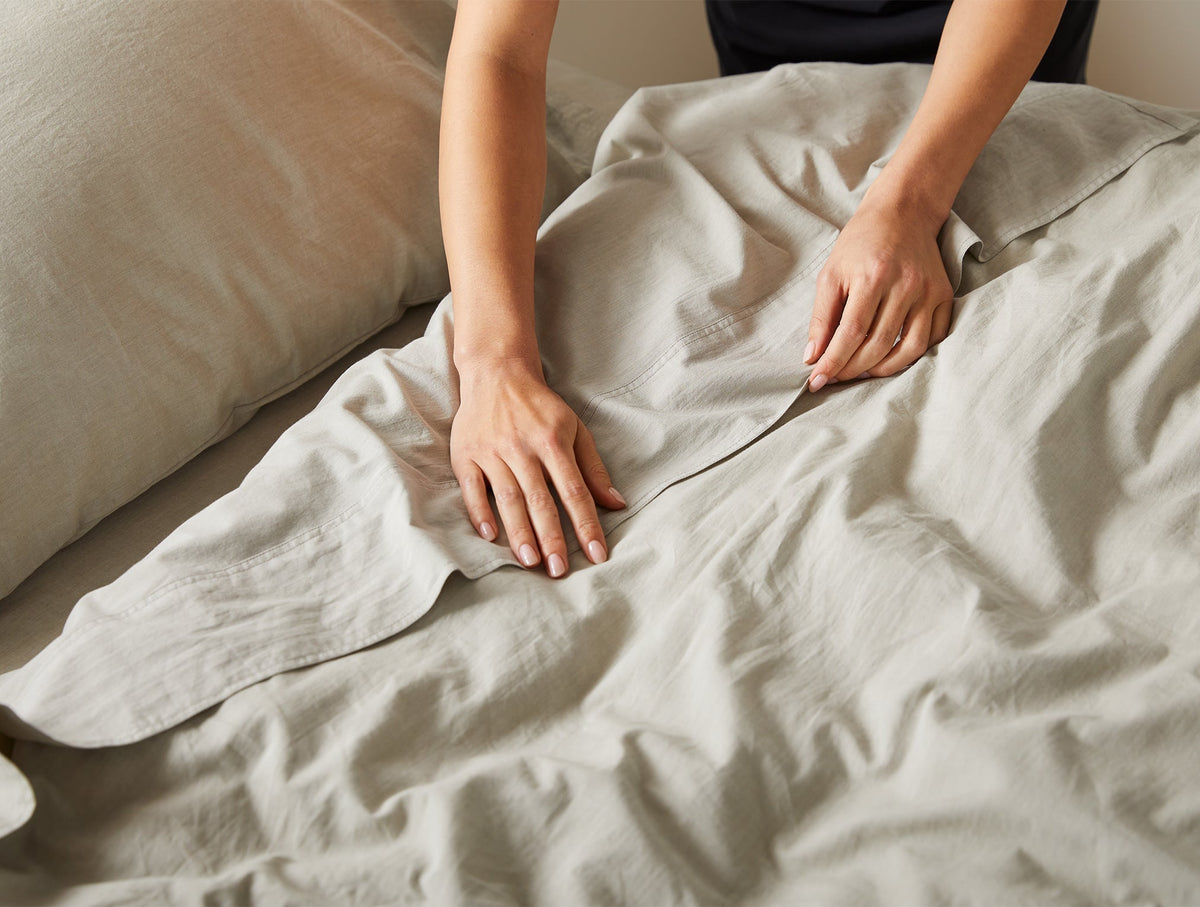
Sateen vs Percale: What's The Difference?
Your perfect sheets exist, but finding them can feel like a chore. Linen or cotton? Percale or sateen? The right choice is personal, and once you acquaint yourself with a little insider terminology, the decision will be easier to make.
Starting with the fiber that launched Coyuchi, organic cotton. Organic cotton is highly versatile; the same fiber can be spun into fine or thick yarns, woven or knit, left smooth or brushed—and the results can vary from cool and crisp to warm and cozy. Let’s look at two of the most popular weaves for sheets, percale and sateen.
Sateen vs. Percale
Our Percale and Sateen collections garner questions from sleepers due to the subtlety of their differences. Both fabrics are woven from long staple, GOTS-certified organic cotton, and both have been a part of the Coyuchi family for decades. But how do you tell them apart?
Percale: Lightweight, Crisp + Cool
Our percale bedding is made with a balanced weave where threads alternate over and under, creating a matte finish and a crisp, smooth hand. Percale feels cool when you slip into bed and its crispness causes it to tent away from the skin, allowing for better air circulation.
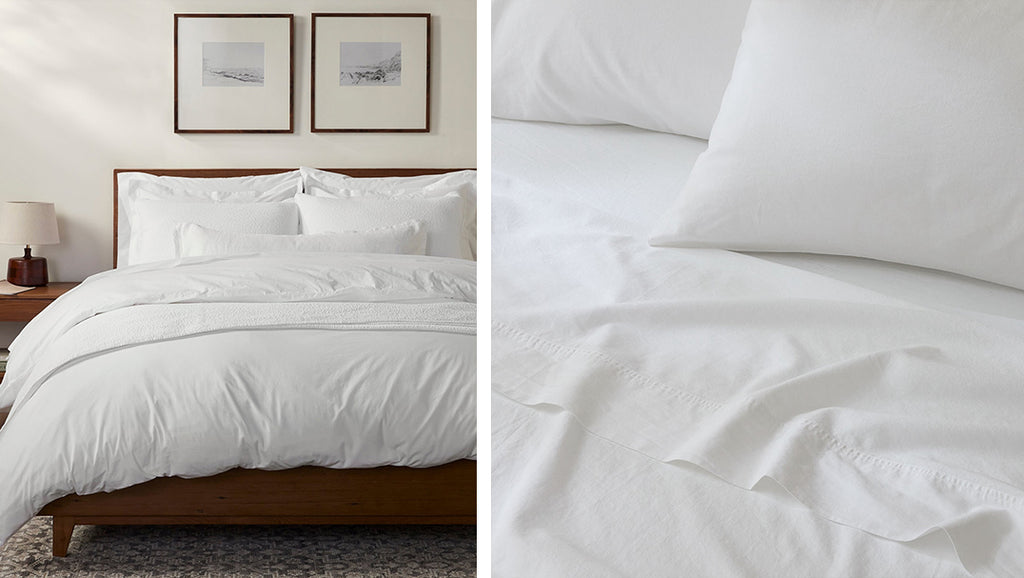
The sheets that started it all, our Refined Organic Percale Sheets are a true Coyuchi original. While others focused on high thread counts, we knew finer, tightly woven cotton provided better quality and comfort—and we set the standard when we chose to do it using organic cotton.
Choose Percale If:
- You're layering for warmer weather, or you tend to sleep hot.
- You like your sheets to feel crisp + cool.
Sateen: Exceptionally Soft + Smooth
Our sateen fabric floats multiple yarns in one direction over a single yarn, creating a smooth, lustrous, and very soft surface on one side, and a slightly matte one on the other. This silky, durable, and wrinkle-resistant finish makes it a favorite for high-end hotels.
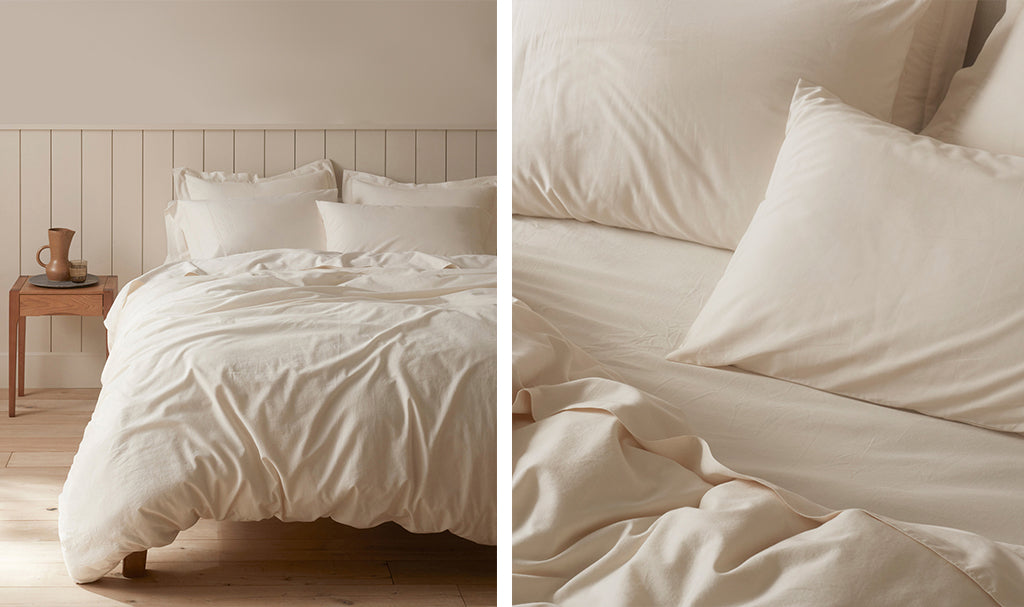
Our Sateen Collection came about after the success of our Percale, over 15 years ago. While most sateens at the time favored a much higher thread count—which led to thick, stiff, heavy sheets—Coyuchi opted to take the fine yarns from our percale and weave them into the perfect thread count drapey sateen that softly cradles your body. While the supply for organic cotton (and finer quality, long staple yarns, in particular) was extremely limited at the time, Coyuchi innovated to create our Cloud Soft Sateen, and it’s been the standard for organic cotton bedding ever since.
Choose Sateen If:
- You're layering for cool weather, or you sleep cool
- You like your sheets to conform to your body
- You like your sheets to feel soft, silky and luxurious
- You prefer sheets that are relatively smooth right out of the dryer (without ironing)
Get To Know Our Percale Collection
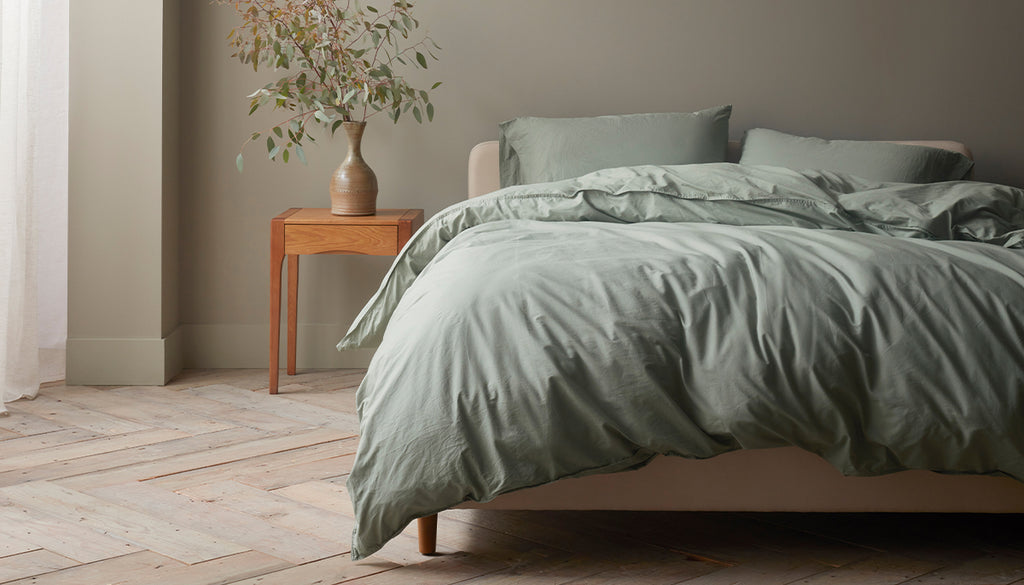 Organic Crinkled Percale
Organic Crinkled Percale
- A touch softer and lighter than our original Refined Organic Percale
- Allover crinkled effect for a more casual, lived-in look
- Great for warm seasons and hot sleepers
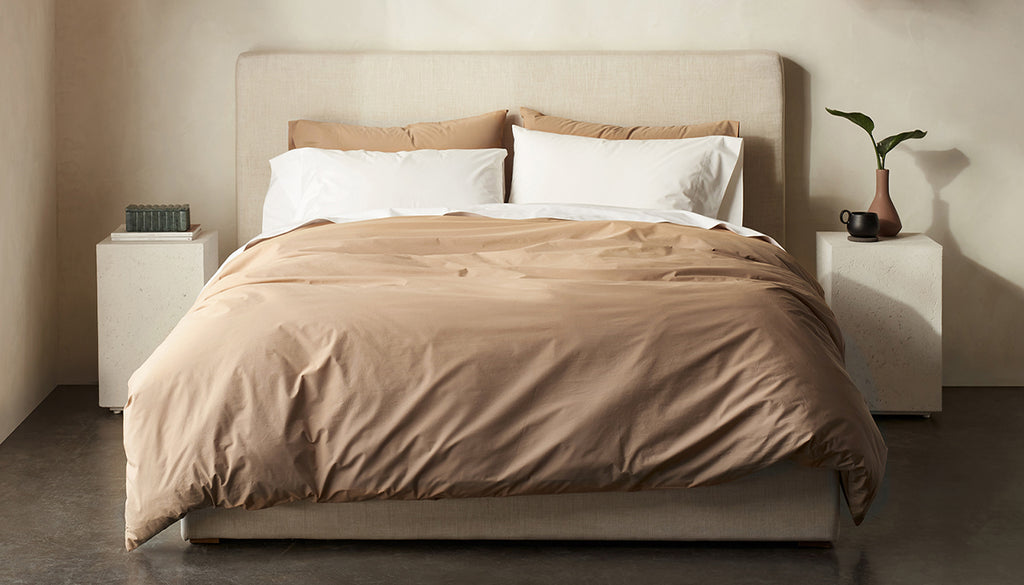
Refined Organic Percale
- Crisp, lightweight and cool to the touch
- Signature feel, like a fresh button-down shirt
- Great for warm seasons and hot sleepers

Heritage Organic Percale
- Crafted from 100% American-grown organic cotton
- Made of extra long staple cotton, creating an exceptionally smooth handfeel
- Our most luxurious percale collection
- Great for warm seasons and hot sleepers
Get To Know Our Sateen Collection

Cloud Soft Organic Sateen
- Smooth and drapey with a subtle sheen
- Warm, petal-like softness
- Great for cool sleepers who want a little extra warmth that's not too hot
Heirloom Organic Sateen
- Exceptionally soft and silky—think 5-star hotel
- Drapey with a lustrous finish that's not too shiny
- Great for cool sleepers who want a little extra warmth that's not too hot
What about thread count?
In recent decades, “thread count” has become a buzzy term to help shoppers determine the supposed quality and hand feel of sheets. Thread count refers to the number of horizontal and vertical threads present in one square inch of woven fabric. Popular marketing might lead you to believe that more yarn equals better fabric, but this is rarely the truth.
In an effort to pad their numbers, some mills use a “double insertion” technique: running two yarns through the weave as though it were one. The result is a higher thread count, but the weave will be unbalanced, creating a lower quality fabric that is less durable and more likely to tear.
The next time you're shopping for your dream sheets, take those thread counts with a grain of salt. If you instead set your sights on: the integrity of the yarn used, the weave selected, and the quality of the finished product, you’ll find the best bedding you’ve ever slept on.
Still not sure which fabric is right for you? Explore our Sheet Guide to find your perfect sheets.